Potřebujeme váš souhlas k využití jednotlivých dat, aby se vám mimo jiné mohly ukazovat informace týkající se vašich zájmů. Souhlas udělíte kliknutím na tlačítko „OK“.
ASTM D7574-09
Standard Test Method for Determination of Bisphenol A in Environmental Waters by Liquid Chromatography/Tandem Mass Spectrometry
Automaticky přeložený název:
Standardní zkušební metoda pro stanovení bisfenolu A ve vodách v oblasti životního prostředí se kapalinová chromatografie / Tandem hmotnostní spektrometrie
NORMA vydána dne 1.10.2009
Informace o normě:
Označení normy: ASTM D7574-09
Poznámka: NEPLATNÁ
Datum vydání normy: 1.10.2009
Kód zboží: NS-38751
Počet stran: 9
Přibližná hmotnost: 27 g (0.06 liber)
Země: Americká technická norma
Kategorie: Technické normy ASTM
Kategorie - podobné normy:
Anotace textu normy ASTM D7574-09 :
Keywords:
Bisphenol A, liquid chromatography, solid phase extraction, tandem mass spectrometry, water, ICS Number Code 13.060.50 (Examination of water for chemical substances)
Doplňující informace
| Significance and Use | ||||||||||||||||
|
The first reported synthesis of BPA was by the reaction of phenol with acetone by Zincke. BPA has become an important high volume industrial chemical used in the manufacture of polycarbonate plastic and epoxy resins. Polycarbonate plastic and resins are used in numerous products including electrical and electronic equipment, automobiles, sports and safety equipment, reusable food and drink containers, electrical laminates for printed circuit boards, composites, paints, adhesives, dental sealants, protective coatings and many other products. The environmental source of BPA is predominantly from the decomposition of polycarbonate plastics and resins. BPA is not classified as bio-accumulative by the U.S. Environmental Protection Agency and will biodegrade. BPA has been reported to have adverse effects in aquatic organisms and may be released into environmental waters directly at trace levels through landfill leachate and POTW effluents. This method has been investigated for use with surface water and secondary and tertiary POTW effluent samples therefore, it is applicable to these matrices only. It has not been investigated for use with salt water or solid sample matrices. |
||||||||||||||||
| 1. Scope | ||||||||||||||||
|
1.1 This procedure covers the determination of bisphenol A (BPA) extracted from water utilizing solid phase extraction (SPE), separated using liquid chromatography (LC) and detected with tandem mass spectrometry (MS/MS). BPA is qualitatively and quantitatively determined by this method. This method adheres to multiple reaction monitoring (MRM) mass spectrometry. 1.2 The values stated in SI units are to be regarded as standard. No other units of measurement are included in this standard. 1.3 The method detection limit (MDL) and reporting limit (RL) for BPA are listed in Table 1. 1.4 This standard does not purport to address all of the safety concerns, if any, associated with its use. It is the responsibility of the user of this standard to establish appropriate safety and health practices and determine the applicability of regulatory limitations prior to use. TABLE 1 MDL and Reporting Range
A MDL determined following the Code of Federal Regulations, 40CFR Part 136, Appendix B. B Lowest point of the reporting range, reporting limit, is calculated from the LV 1 concentration calibration standard in Table 4. Fig. 1 displays the signal/noise ratio at the reporting limit. |
||||||||||||||||
| 2. Referenced Documents | ||||||||||||||||
|
Podobné normy:
Historická
1.5.2010
Historická
15.6.2013
Historická
1.10.2009
Historická
1.3.2009
Historická
1.1.2012
Historická
1.10.2009
Doporučujeme:
Aktualizace zákonů
Chcete mít jistotu o platnosti užívaných předpisů?
Nabízíme Vám řešení, abyste mohli používat stále platné (aktuální) legislativní předpisy.
Chcete vědět více informací? Podívejte se na tuto stránku.



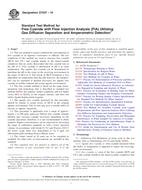 ASTM D7237-10
ASTM D7237-10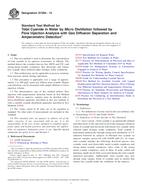 ASTM D7284-13
ASTM D7284-13 ASTM D7365-09a
ASTM D7365-09a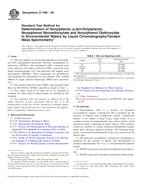 ASTM D7485-09
ASTM D7485-09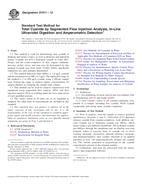 ASTM D7511-12
ASTM D7511-12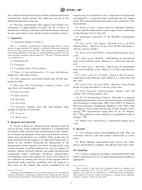 ASTM D7535-09e1
ASTM D7535-09e1
 Cookies
Cookies
